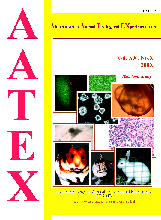11 巻, 2 号
選択された号の論文の7件中1~7を表示しています
- |<
- <
- 1
- >
- >|
Review
-
原稿種別: Review
2005 年11 巻2 号 p. 89-100
発行日: 2005/11/30
公開日: 2012/03/01
PDF形式でダウンロード (144K)
Topics
-
原稿種別: Topics
2005 年11 巻2 号 p. 101-104
発行日: 2005/11/30
公開日: 2012/03/01
PDF形式でダウンロード (149K)
Original Article
-
原稿種別: Original Article
2005 年11 巻2 号 p. 105-111
発行日: 2005/11/30
公開日: 2012/03/01
PDF形式でダウンロード (224K) -
原稿種別: Original Article
2005 年11 巻2 号 p. 112-117
発行日: 2005/11/30
公開日: 2012/03/01
PDF形式でダウンロード (179K) -
原稿種別: Original Article
2005 年11 巻2 号 p. 118-128
発行日: 2005/11/30
公開日: 2012/03/01
PDF形式でダウンロード (441K) -
原稿種別: Original Article
2005 年11 巻2 号 p. 129-135
発行日: 2005/11/30
公開日: 2012/03/01
PDF形式でダウンロード (220K) -
原稿種別: Original Article
2005 年11 巻2 号 p. 136-144
発行日: 2005/11/30
公開日: 2012/03/01
PDF形式でダウンロード (257K)
- |<
- <
- 1
- >
- >|
